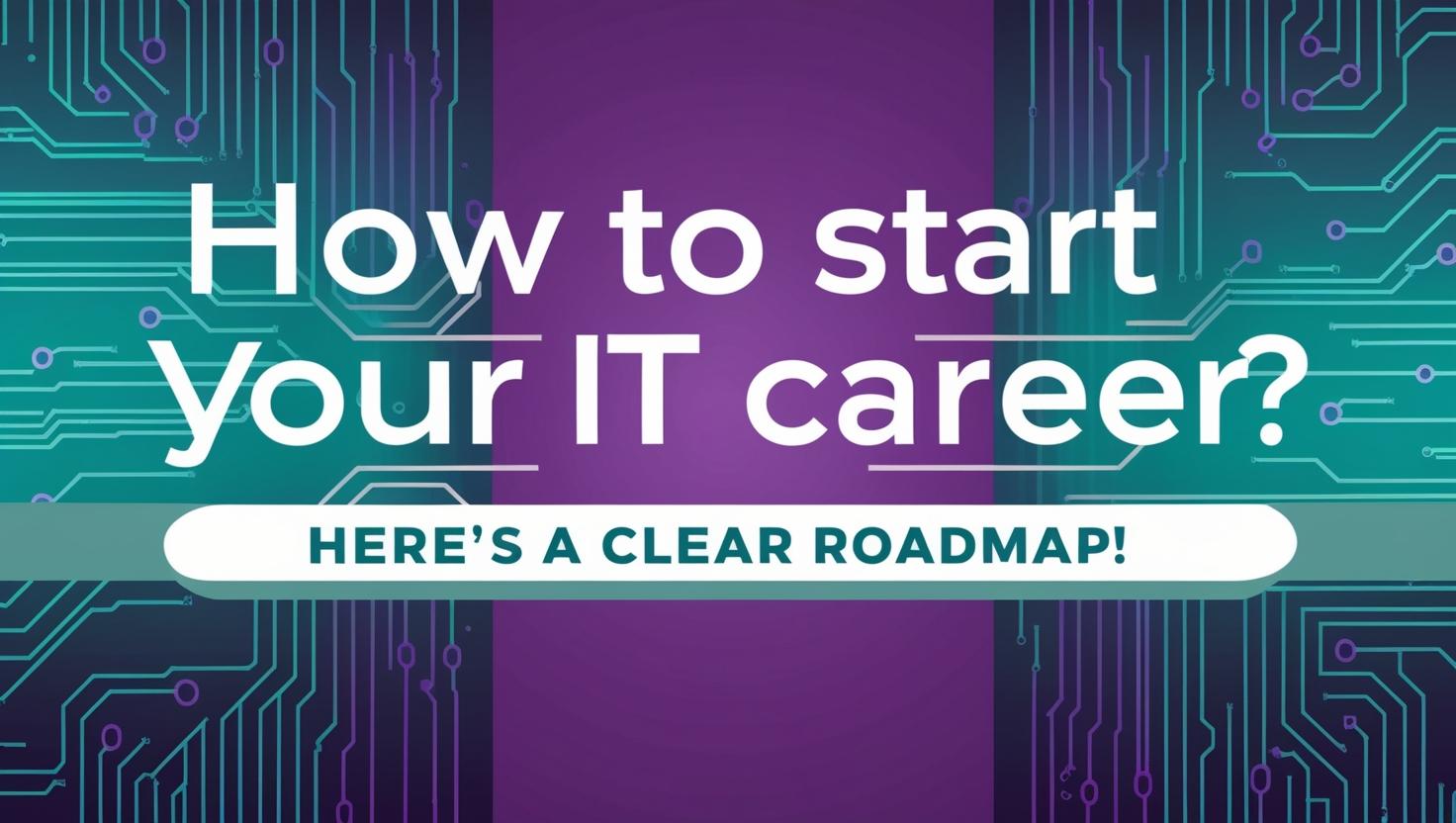
The IT industry is growing rapidly, offering excellent career opportunities for those who are ready to learn and adapt. Whether you’re a complete beginner or looking to transition into IT from another field, this roadmap will guide you through the key steps to launching a successful career.
Step 1: Identify Your Interests in IT
IT is a broad field with various career paths, including:
- Cybersecurity – Protecting networks and data from cyber threats
- Networking – Configuring and managing IT infrastructure
- Software Development – Designing and coding applications
- Cloud Computing – Working with cloud platforms like AWS and Azure
- Data Analytics – Extracting insights from data
- IT Support – Troubleshooting and maintaining IT systems
If you’re unsure which path suits you best, our Beginner IT Course will introduce you to fundamental concepts across multiple IT disciplines.
Step 2: Build a Strong IT Foundation
Before specializing, it’s essential to develop core IT knowledge, including:
- Computer hardware and software basics
- Networking fundamentals
- Operating systems (Windows, Linux, macOS)
- Cybersecurity principles
Our Beginner IT Course covers these foundational skills to set you up for success.
Step 3: Earn Industry-Recognized Certifications
Certifications help validate your skills and increase your job prospects. Some recommended beginner certifications include:
- CompTIA A+ – Ideal for IT support and troubleshooting
- CompTIA Network+ – Essential for networking professionals
- CompTIA Security+ – A great entry point for cybersecurity
- AWS Certified Cloud Practitioner – A foundation for cloud computing
Our Intermediate and Advanced IT Courses are designed to prepare you for these certifications with hands-on training.
Step 4: Gain Hands-On Experience
Practical experience is just as important as certifications. Consider:
- Setting up a home lab to practice networking and security skills
- Participating in open-source projects
- Engaging in cybersecurity competitions (e.g., Capture The Flag)
- Volunteering for IT support roles to gain real-world experience
Our Advanced IT Courses provide hands-on labs and real-world simulations to help you apply your knowledge.
Step 5: Build a Strong Resume and Portfolio
Employers look for candidates who can showcase their skills. To stand out:
- Create a GitHub profile to display coding or IT projects
- Document troubleshooting solutions in a personal blog
- Highlight certifications and hands-on projects in your resume
Our IT Career Training Programs include resume-building workshops and interview coaching to help you secure your first job.
Step 6: Apply for Jobs and Network
Building connections in the IT industry can open up job opportunities. To increase your chances of landing a job:
- Create a professional LinkedIn profile and connect with industry professionals
- Join IT forums, discussion groups, and local tech meetups
- Apply for entry-level roles such as Help Desk Technician, IT Support Specialist, or Junior SOC Analyst
We offer career support and mentorship through our IT programs to help you navigate the job market.
Step 7: Keep Learning and Advance Your Career
Technology is constantly evolving, and staying updated is crucial. After gaining some experience, consider advanced certifications such as:
- Certified Ethical Hacker (CEH) – For cybersecurity specialists
- Cisco CCNA – For networking professionals
- AWS Solutions Architect – For cloud computing experts
Our Advanced IT Courses are designed to help you upskill and stay competitive in the industry.
Start Your IT Journey with PaniTech Academy
If you’re ready to build a rewarding career in IT, PaniTech Academy provides expert-led training programs for every skill level.
- Beginner IT Course – Perfect for those new to IT
- Intermediate IT Course – Focused on certifications and job readiness
- Advanced IT Course – Designed for professionals looking to advance their careers
Click here to enroll now and take the first step toward a successful IT career.
For more information, visit PaniTech Academy or contact us today.
